Simulation of Onset of the Capillary Surface Wave in the Ultrasonic Atomizer
Abstract
:1. Introduction
2. Theoretical Background
3. Effect of Hydrodynamic on Faraday Wave
4. Finite-Element Analysis
5. Results
5.1. Simulated Result
5.1.1. Vibrational Amplitude hcr = 0.36 μm
5.1.2. Vibrational Amplitude he = 0.38 μm
5.1.3. Higher Vibrational Amplitude hcr = 0.40 μm and More
6. Discussion
7. Conclusions
Author Contributions
Funding
Acknowledgments
Conflicts of Interest
References
- Schehl, N.; Kramb, V.; Dierken, J.; Aldrin, J.; Schwalbach, E.; John, R. Ultrasonic assessment of additive manufactured Ti-6Al-4V. AIP Conf. Proc. 2018, 1949, 020008. [Google Scholar] [CrossRef]
- Vorobev, A.; Ivantsov, A.; Lyubimova, T. Phase-field modelling of gravity-capillary waves on a miscible interface. Eur. Phys. J. E 2017, 40, 99. [Google Scholar] [CrossRef]
- Wei, L.-J.; Oxley, C.H. Carbon based resistive strain gauge sensor fabricated on titanium using micro-dispensing direct write technology. Sensors Actuators A Phys. 2016, 247, 389–392. [Google Scholar] [CrossRef]
- Faraday, M. XVII. On a peculiar class of acoustical figures; and on certain forms assumed by groups of particles upon vibrating elastic surfaces. Philos. Trans. R. Soc. Lond. 1831, 121, 299–340. [Google Scholar] [CrossRef]
- Breitenbach, J.; Kissing, J.; Roisman, I.V.; Tropea, C. Characterization of secondary droplets during thermal atomization regime. Exp. Therm. Fluid Sci. 2018, 98, 516–522. [Google Scholar] [CrossRef]
- Yang, H.-W.; Hua, M.-Y.; Hwang, T.-L.; Lin, K.-J.; Huang, C.-Y.; Tsai, R.-Y.; Ma, C.-C.M.; Hsu, P.; Wey, S.-P.; Hsu, P.-W.; et al. Non-Invasive Synergistic Treatment of Brain Tumors by Targeted Chemotherapeutic Delivery and Amplified Focused Ultrasound-Hyperthermia Using Magnetic Nanographene Oxide. Adv. Mater. 2013, 25, 3605–3611. [Google Scholar] [CrossRef] [PubMed]
- Yang, F.-Y.; Chang, W.-Y.; Lin, W.-T.; Hwang, J.-J.; Chien, Y.-C.; Tsai, M.-L.; Wang, H.-E. Focused ultrasound enhanced molecular imaging and gene therapy for multifusion reporter gene in glioma-bearing rat model. Oncotarget 2015, 6, 36260–36268. [Google Scholar] [CrossRef] [PubMed] [Green Version]
- Simon, J.C.; Sapozhnikov, O.A.; Khokhlova, V.A.; Crum, L.A.; Bailey, M.R. Ultrasonic atomization of liquids in drop-chain acoustic fountains. J. Fluid Mech. 2015, 766, 129–146. [Google Scholar] [CrossRef] [PubMed] [Green Version]
- Perron, R. The Design and Application of a Reliable Ultrasonic Atomizer. IEEE Trans. Sonics Ultrason. 1967, 14, 149–152. [Google Scholar] [CrossRef]
- Zhang, Y.; Yuan, S.; Wang, L. Investigation of capillary wave, cavitation and droplet diameter distribution during ultrasonic atomization. Exp. Therm. Fluid Sci. 2021, 120, 110219. [Google Scholar] [CrossRef]
- Goodridge, C.L.; Shi, W.T.; Hentschel, H.G.E.; Lathrop, D. Viscous effects in droplet-ejecting capillary waves. Phys. Rev. E 1997, 56, 472–475. [Google Scholar] [CrossRef] [Green Version]
- Benjamin, T.B.; Ursell, F. The stability of the plane free surface of a liquid in vertical periodic motion. Proc. R. Soc. London. Ser. A Math. Phys. Sci. 1954, 225, 505–515. [Google Scholar] [CrossRef]
- Deepu, P.; Peng, C.; Moghaddam, S. Dynamics of ultrasonic atomization of droplets. Exp. Therm. Fluid Sci. 2018, 92, 243–247. [Google Scholar] [CrossRef]
- Barreras, F.; Amaveda, H.; Lozano, A. Transient high-frequency ultrasonic water atomization. Exp. Fluids 2002, 33, 405–413. [Google Scholar] [CrossRef]
- Eisenmenger, W. Dynamic properties of the surface tension of water and aqueous solutions of surface-active agents with standing capillary waves in the frequency range from 10 kc/s to 1.5 Mc/s. Acustica 1959, 9, 327–340. [Google Scholar]
- Tsai, C.; Mao, R.; Lin, S.; Zhu, Y.; Tsai, S. Faraday instability-based micro droplet ejection for inhalation drug delivery. Technology 2014, 2, 75–81. [Google Scholar] [CrossRef] [PubMed] [Green Version]
- Lang, R.J. Ultrasonic Atomization of Liquids. J. Acoust. Soc. Am. 1962, 34, 6–8. [Google Scholar] [CrossRef]
- Sindayihebura, D.; Dobre, M.; Bolle, L. Experimental study of thin liquid film ultrasonic atomization. In 4th World Conference on Experimental Heat Transfer, Fluid Mechanics and Thermodynamics; Elsevier: Brussels, Belgium, 1997; pp. 1249–1256. [Google Scholar]
- Kumar, S. Mechanism for the Faraday instability in viscous liquids. Phys. Rev. E 2000, 62, 1416–1419. [Google Scholar] [CrossRef] [PubMed]
- Tsai, S.C.; Tsai, C.S. Linear theory on temporal instability of megahertz faraday waves for monodisperse microdroplet ejection. IEEE Trans. Ultrason. Ferroelectr. Freq. Control. 2013, 60, 1746–1755. [Google Scholar] [CrossRef] [PubMed]
- Kumar, S.; Matar, O.K. On the Faraday instability in a surfactant-covered liquid. Phys. Fluids 2004, 16, 39–46. [Google Scholar] [CrossRef]
- Mikishev, A.B.; Friedman, B.A.; Nepomnyashchy, A.A. Generation of transverse waves in a liquid layer with insoluble surfactant subjected to temperature gradient. Fluid Dyn. Res. 2016, 48, 061403. [Google Scholar] [CrossRef]
- Yang, Z.; Tao, R.; Ni, H.; Zhong, K.; Lian, Z. Performance study of the internally-cooled ultrasonic atomization liquid desiccant dehumidification system. Energy 2019, 175, 745–757. [Google Scholar] [CrossRef]
- Lyubimova, T.; Ivantsov, A.; Garrabos, Y.; Lecoutre, C.; Beysens, D. Faraday waves on band pattern under zero gravity conditions. Phys. Rev. Fluids 2019, 4, 064001. [Google Scholar] [CrossRef]
- Lyubimov, D.V.; Ivantsov, A.O.; Lyubimova, T.P.; Khilko, G.L. Numerical modeling of frozen wave instability in fluids with high viscosity contrast. Fluid Dyn. Res. 2016, 48, 061415. [Google Scholar] [CrossRef]
- Song, Y.-L.; Cheng, C.H.; Lee, C.F.; Chang, L.M.; Chou, Y.F. Numerical Analysis and Experimental Results by Silicon-Based MHz Ultrasonic Nozzles to Product of Monodisperse Droplets. Adv. Mater. Res. 2011, 335–336, 787–796. [Google Scholar] [CrossRef]
- Ivantsov, A.; Lyubimova, T. Numerical Simulations of Liquid Drop Dynamics in Porous Medium using Adaptive Mesh. In Proceedings of the 2018 Ivannikov Ispras Open Conference (ISPRAS), Moscow, Russia, 22–23 November 2018; pp. 91–94. [Google Scholar]
- Kumar, K. Linear theory of Faraday instability in viscous liquids. Proc. R. Soc. A Math. Phys. Eng. Sci. 1996, 452, 1113–1126. [Google Scholar] [CrossRef]
- Song, Y.-L.; Cheng, C.H.; Chang, L.-M.; Lee, C.-F.; Chou, Y.F. Novel device to measure critical point “Onset” of capillary wave and interpretation of Faraday instability wave by numerical analysis. Ultrasonics 2012, 52, 54–61. [Google Scholar] [CrossRef] [PubMed]
- Louis, E.; Miralles, J.A.; Chiappe, G.; Bazán, A.; Adrados, J.-P.; Cobo, P. Faraday instability in a vessel with a well: A numerical analysis. Phys. Fluids 2011, 23, 114102. [Google Scholar] [CrossRef]
- Kumar, S. Parametrically driven surface waves in viscoelastic liquids. Phys. Fluids 1999, 11, 1970–1981. [Google Scholar] [CrossRef]
- Dean, R.G.; Dalrymple, R.A. Water Wave Mechanics for Engineers and Scientists. Coast. Dyn. 1991, 2, 368. [Google Scholar] [CrossRef]
- Wagner, C.; Müller, H.W.; Knorr, K. Faraday Waves on a Viscoelastic Liquid. Phys. Rev. Lett. 1999, 83, 308–311. [Google Scholar] [CrossRef] [Green Version]
- Avvaru, B.; Patil, M.N.; Gogate, P.R.; Pandit, A.B. Ultrasonic atomization: Effect of liquid phase properties. Ultrasonics 2006, 44, 146–158. [Google Scholar] [CrossRef]
- Lyubimova, T.; Ivantsov, A.; Garrabos, Y.; Lecoutre, C.; Gandikota, G.; Beysens, D. Band instability in near-critical fluids subjected to vibration under weightlessness. Phys. Rev. E 2017, 95, 013105. [Google Scholar] [CrossRef] [PubMed]
- Tsai, C.S.; Mao, R.W.; Tsai, S.C.; Shahverdi, K.; Zhu, Y.; Lin, S.K.; Hsu, Y.-H.; Boss, G.; Brenner, M.; Mahon, S.; et al. Faraday Waves-Based Integrated Ultrasonic Micro-Droplet Generator and Applications. Micromachines 2017, 8, 56. [Google Scholar] [CrossRef] [PubMed] [Green Version]
- Lee, G.S.; Sung, H.J.; Kim, H.C. Multiphysics Analysis of a Linear Control Solenoid Valve. J. Fluids Eng. 2012, 135, 011104. [Google Scholar] [CrossRef]
- Song, Y.-L.; Cheng, C.-H.; Reddy, M. Numerical Analysis of Ultrasonic Nebulizer for Onset Amplitude of Vibration with Atomization Experimental Results. Water 2021, 13, 1972. [Google Scholar] [CrossRef]
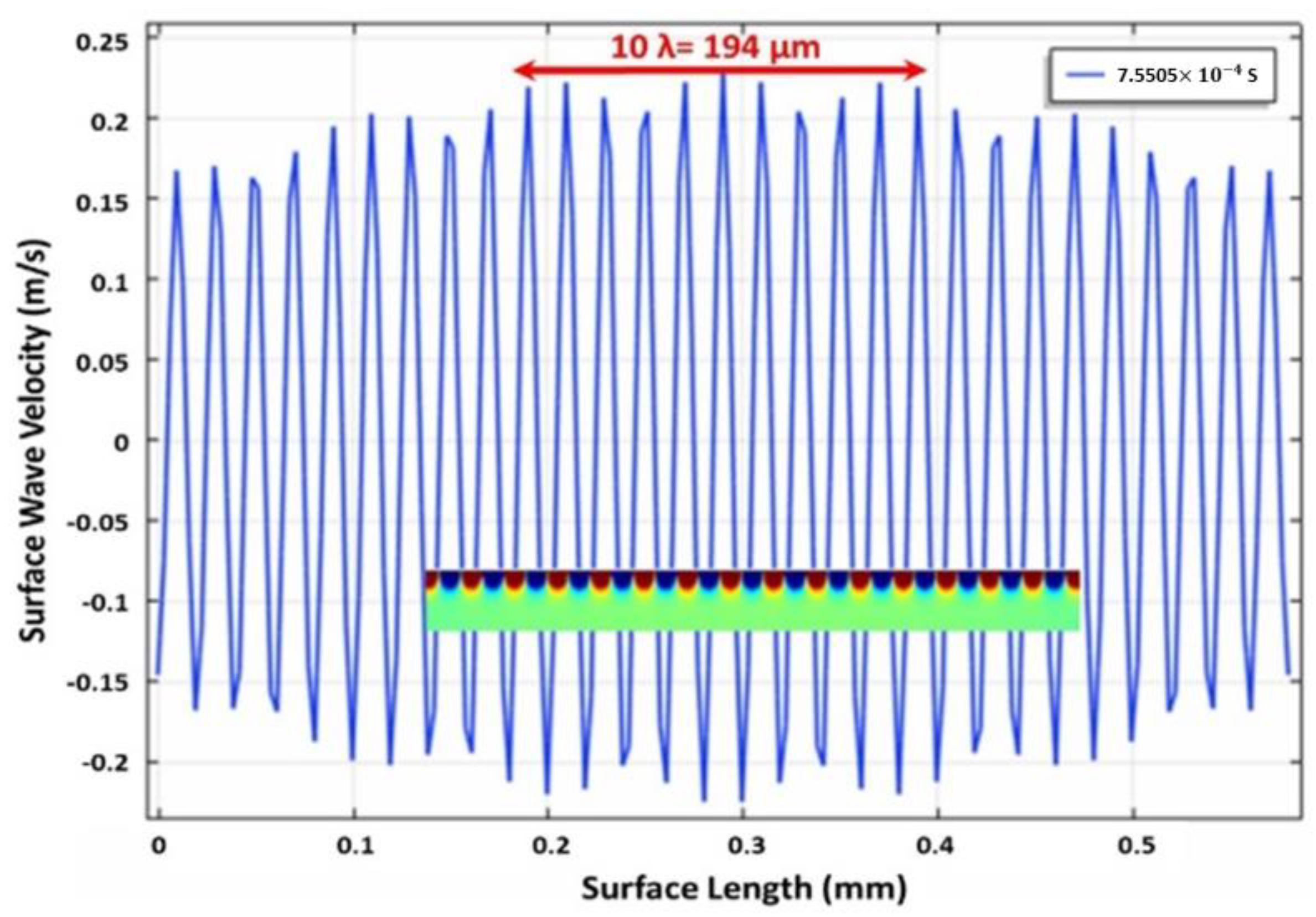
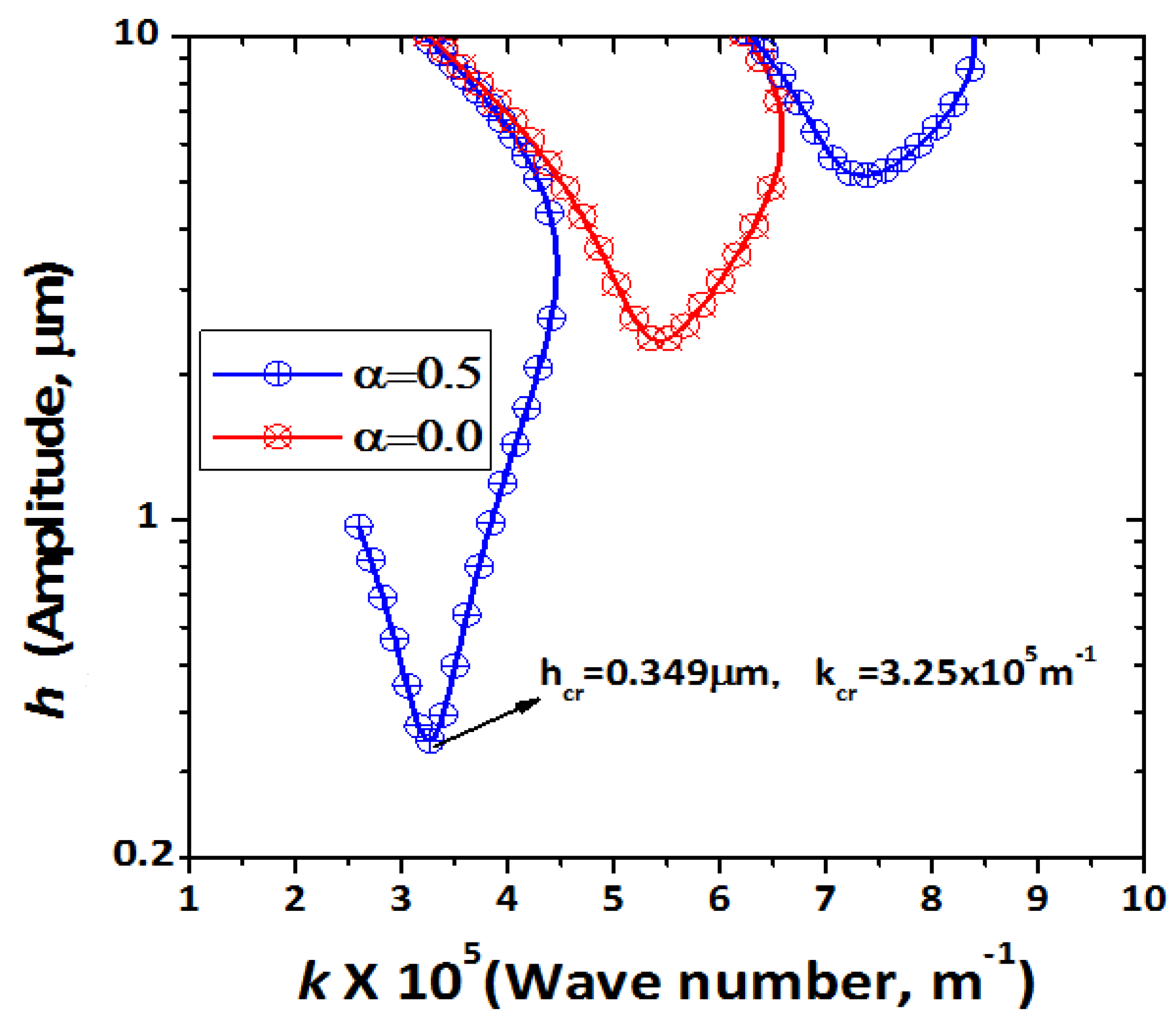


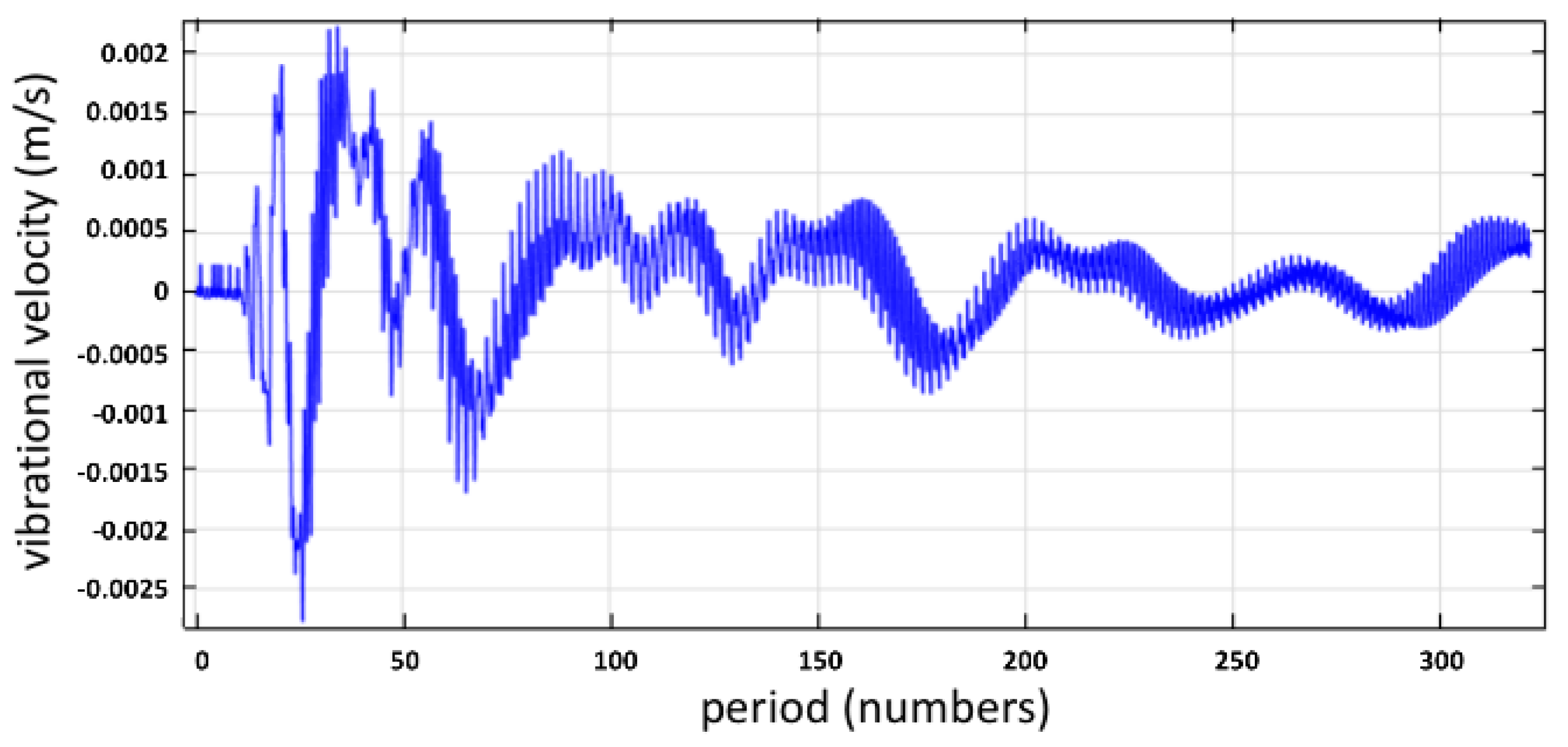
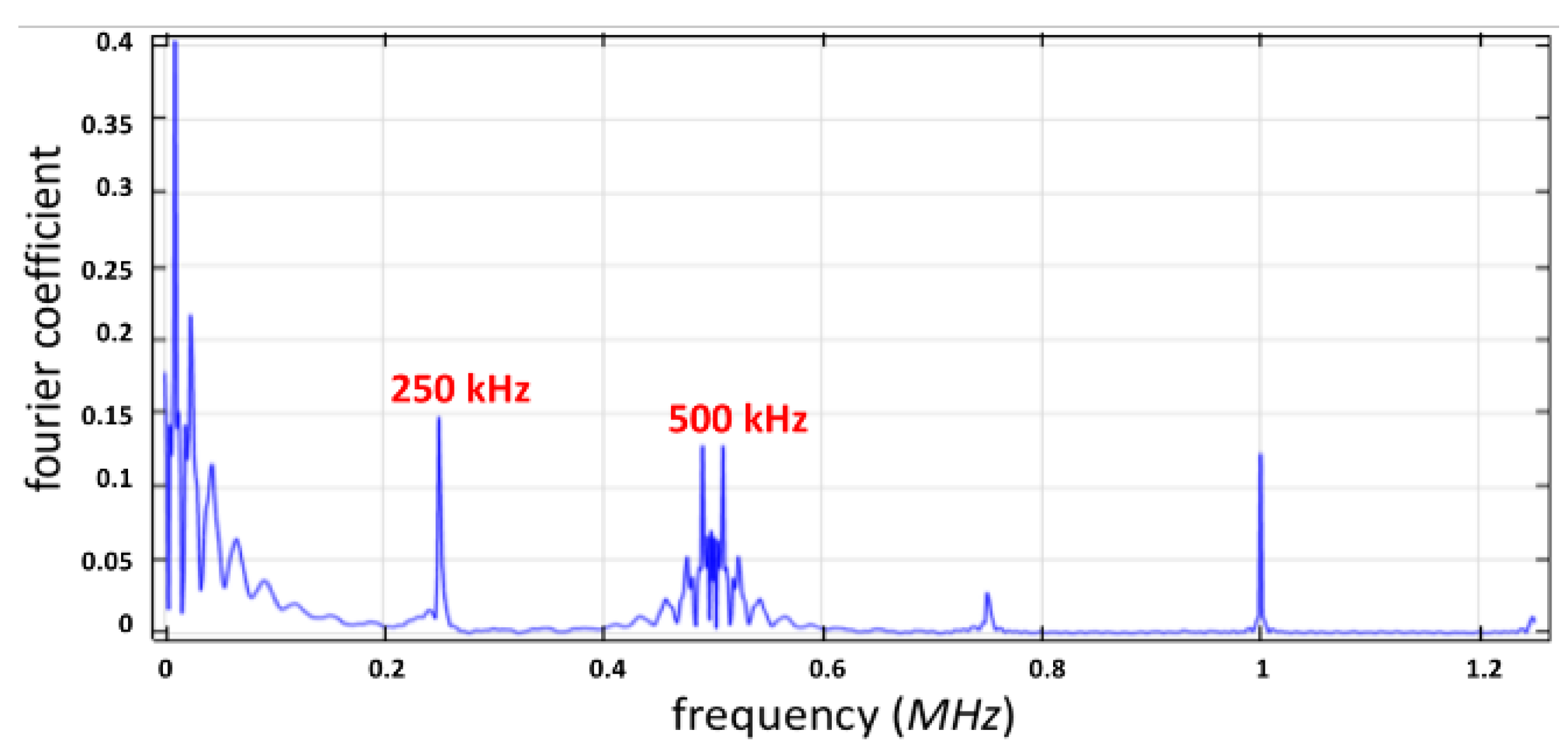
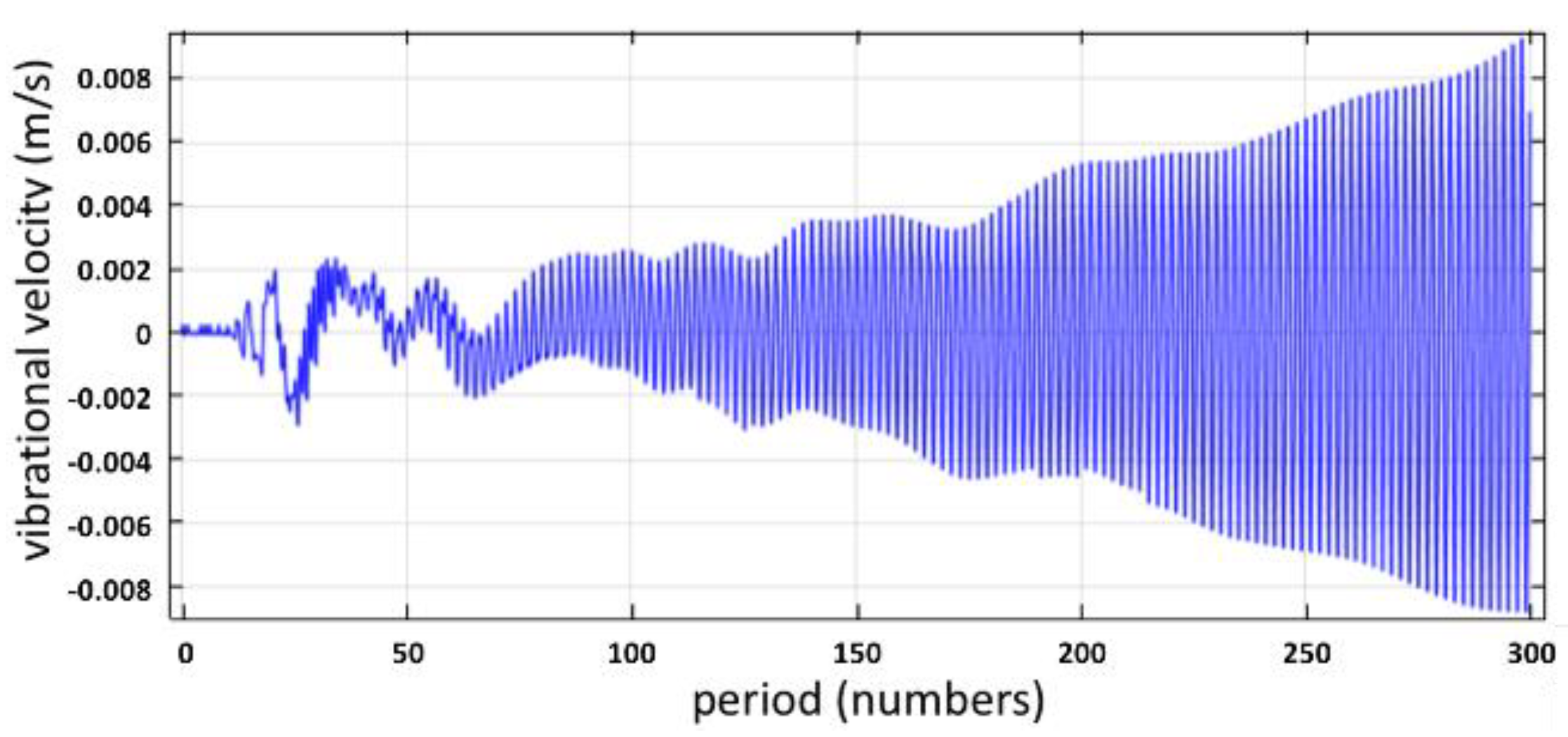
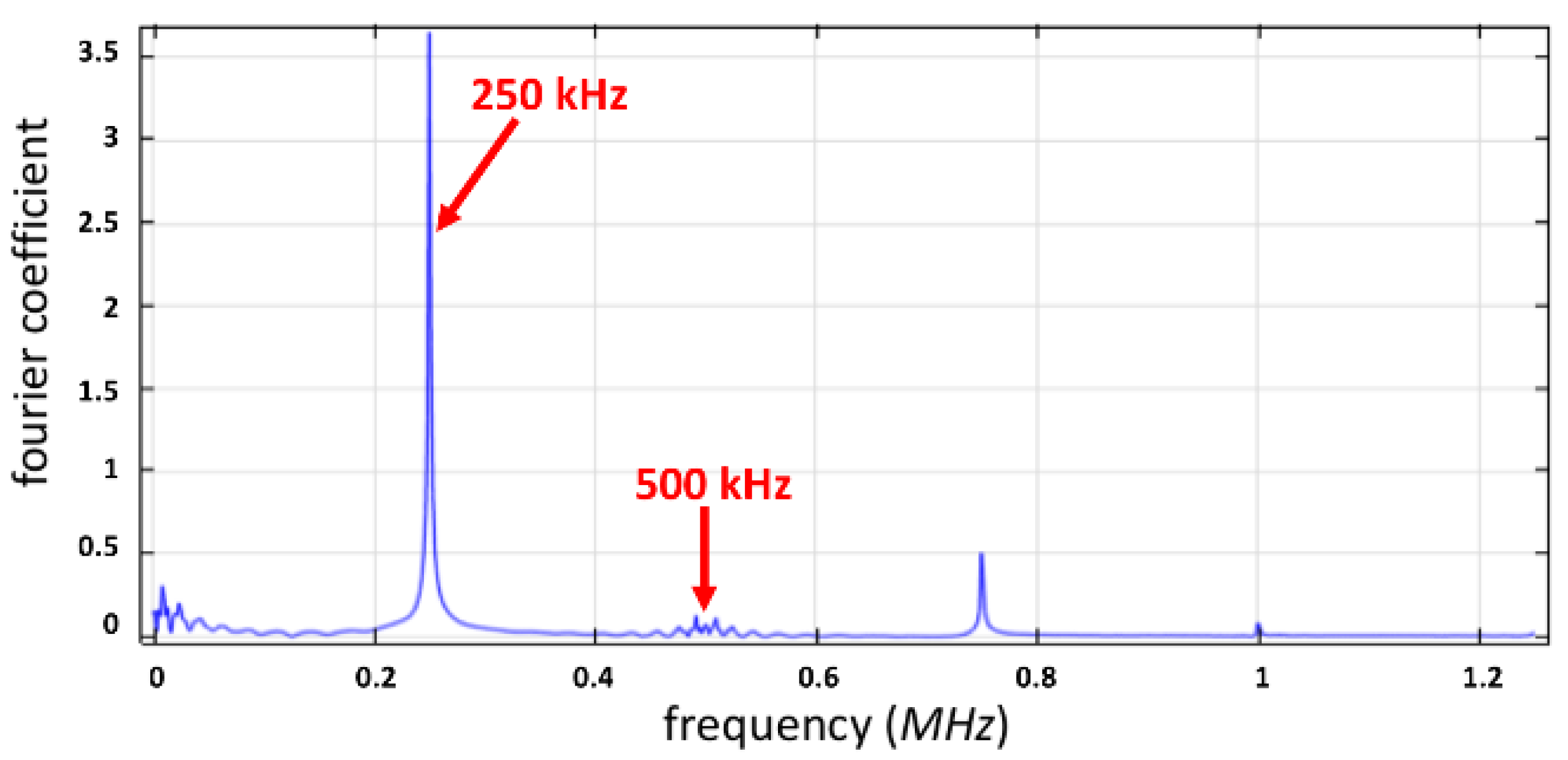
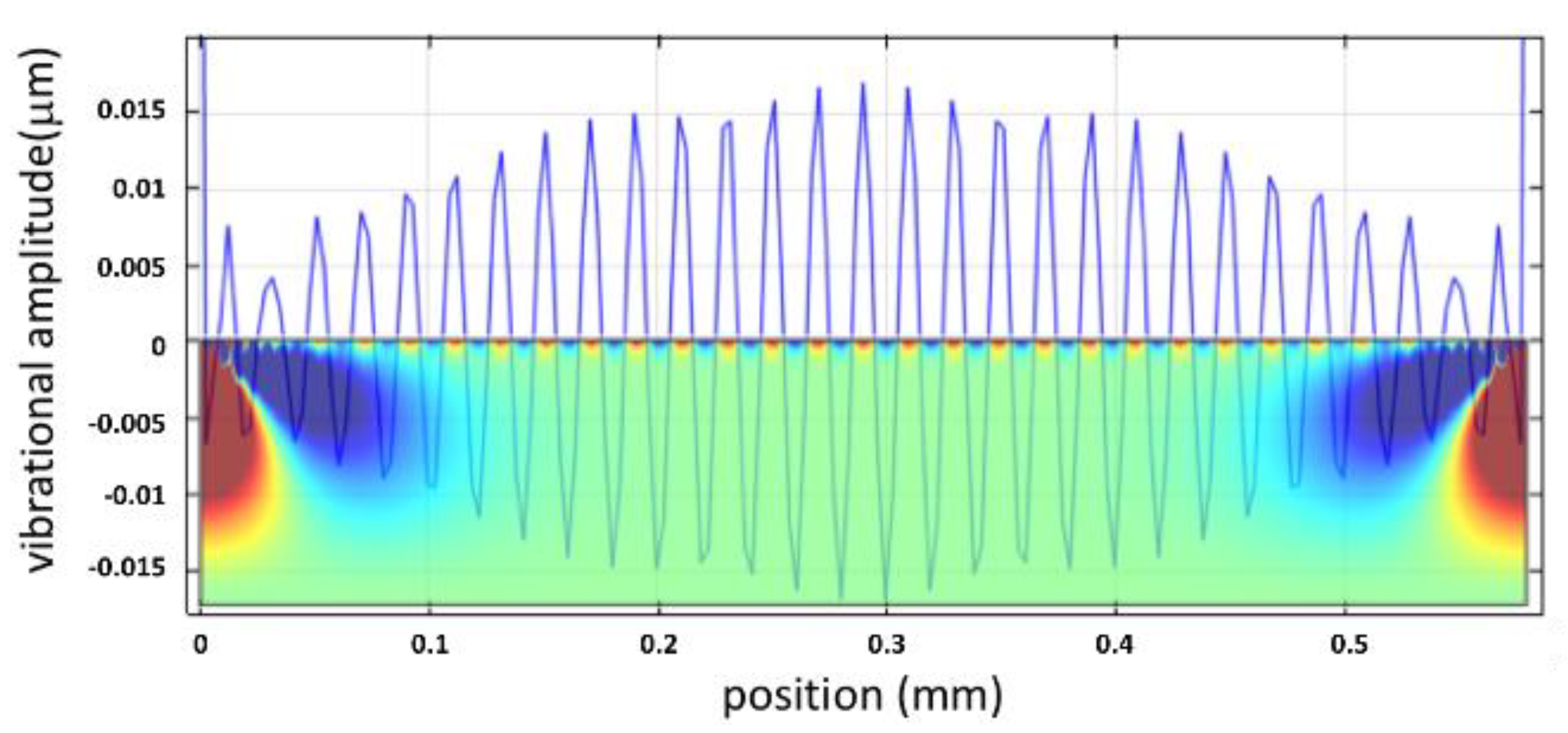
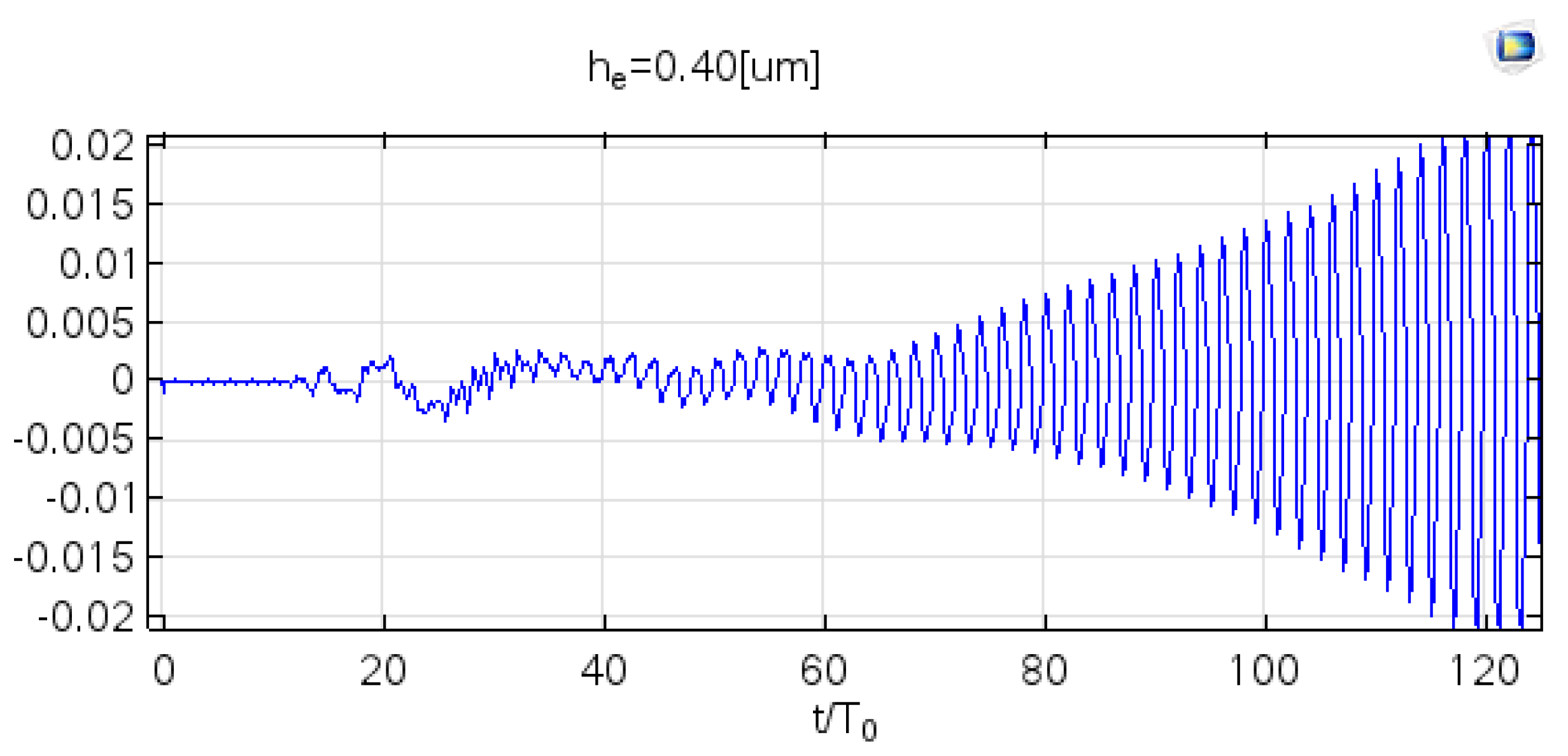
Publisher’s Note: MDPI stays neutral with regard to jurisdictional claims in published maps and institutional affiliations. |
© 2021 by the authors. Licensee MDPI, Basel, Switzerland. This article is an open access article distributed under the terms and conditions of the Creative Commons Attribution (CC BY) license (https://creativecommons.org/licenses/by/4.0/).
Share and Cite
Song, Y.-L.; Cheng, C.-H.; Reddy, M.K.; Islam, M.S. Simulation of Onset of the Capillary Surface Wave in the Ultrasonic Atomizer. Micromachines 2021, 12, 1146. https://doi.org/10.3390/mi12101146
Song Y-L, Cheng C-H, Reddy MK, Islam MS. Simulation of Onset of the Capillary Surface Wave in the Ultrasonic Atomizer. Micromachines. 2021; 12(10):1146. https://doi.org/10.3390/mi12101146
Chicago/Turabian StyleSong, Yu-Lin, Chih-Hsiao Cheng, Manoj Kumar Reddy, and Md Saikhul Islam. 2021. "Simulation of Onset of the Capillary Surface Wave in the Ultrasonic Atomizer" Micromachines 12, no. 10: 1146. https://doi.org/10.3390/mi12101146





